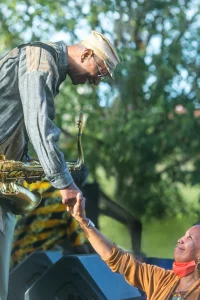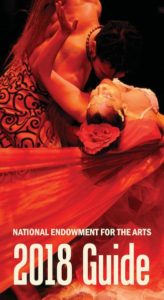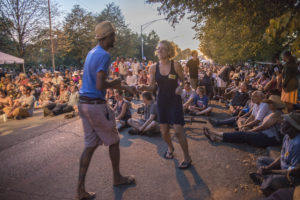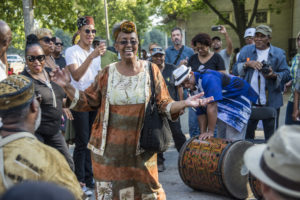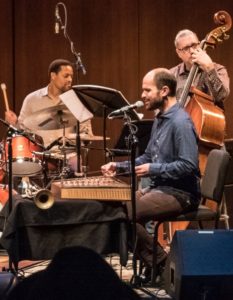If all “jazz” shares a single trait, it’s that nothing will stifle it. Adjusting to covid-19 strictures, Chicago (just for instance) in the past two months has been site of: A stellar Hyde Park Jazz Festival; Herbie Hancock’s homecoming concert at Symphony Center; audiences happily (for the most part – no reported incidents otherwise) observing […]
City of Chicago, music promoter
Lollapalooza 2021 had some 385,000 attendees (without significant Covid-19 outbreak, fortunately) but featured little of host Chicago’s indigenous talent or styles. And that’s just wrong, declared Department of Cultural Affairs and Special Events commissioner Mark Kelly, launching the month-long Chicago in Tune “festival” at a reception August 19. Here’s the still-evolving event calendar of hundreds […]
Jazz and beyond projects with 2018 NEA funding support
Given all the noise, the National Endowment for the Arts’ $25 mil for arts, literature and education announced Feb. 7 may have been overlooked. But these funds and the projects they support, nationwide, should be noted. From more than $3 million going to initiatives strictly labeled “Music” (exclusive of “Musical Theater” or “Opera”) here’s my subjective selection of […]
Hyde Park Jazz Fest, summer’s last dance (photos)
Chicago’s Hyde Park Jazz Festival in the first days of fall (Sept. 23 & 24th) which were unusually hot, is an exceptional event, curated for creative artistry, local and otherwise, drawing a highly diverse crowd to a fair that mixes popular and specialized performances at a range of boutique venues. Produced by an independent 501c3, the 11-year-old Hyde […]
Jazz community upends Englewood’s bad rep
The 18th annual free Englewood Jazz Festival in south side Hamilton Park last Saturday (9/16) affirmed the best of Chicago’s grassroots culture, promoting an opposite image of this challenged neighborhood as a dangerous place — unless one fears powerful, creative music that speaks as directly as dance rhythms to its family of listeners. Produced on behalf of the Live […]
Jazz/Improv Chicago: Wide-ranging talents, free fests, PoKempner pix
Chicago’s jazz/improvised music scene contains multitudes, last week ranging from the wild yet earnest Liberation Music Collective to veteran piano sophisticate Michael Weiss in trio, as two of Marc PoKempner‘s photos document (and more of his vision, focused on links between local music and politics — Obama included — is on exhibit titled “Harold’s Got […]
African roots, Middle Eastern extensions in Hyde Park Jazz Fest
Pianist Randy Weston, a magisterial musician at age 90 inspired by jazz traditions and its African basics, and trumpeter Amir ElSaffar, who has devoted himself to incorporating the Middle East’s modal, microtonal maqam legacy into compositions for jazz improvisation by members of his Two Rivers Ensemble, were highlights of last weekend’s 10th annual Hyde Park Jazz Festival. Both […]
Mayor Daley’s music and arts
Shocking news from Chicago: Richard Daley won’t be mayor for life. Yet he’s the Windy City’s most significant patron of culture, leaving a legacy that ought to — that is, should, and might — survive him. Which was unexpected when he succeeded Mayor Harold Washington in 1989, but clear from my visit to Labor Day […]

